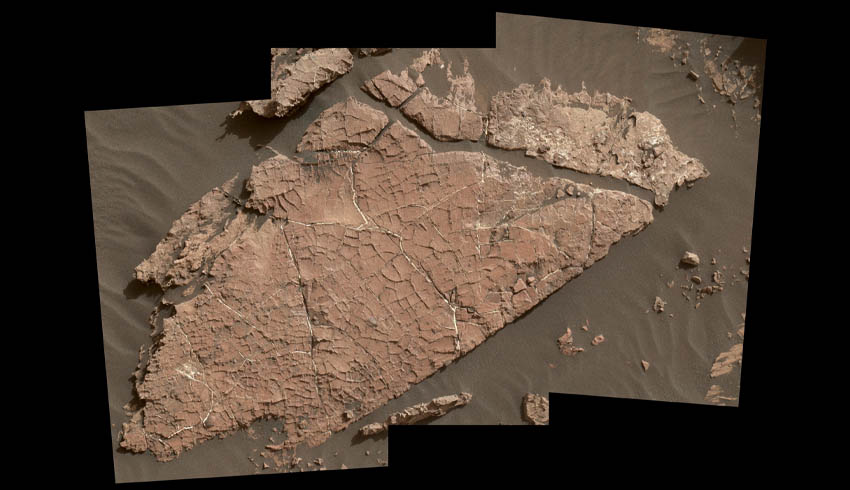Imagine ponds dotting the floor of Gale Crater, the 150-kilometre-wide ancient basin that Curiosity has been exploring. Streams may have laced the crater's walls, running toward its base, repeatedly overflowing then drying in a cycle that probably repeated numerous times over millions of years.
That’s the landscape described by Curiosity scientists in a Nature Geoscience paper published this week. Paper authors interpreted rocks enriched in mineral salts discovered by the rover as evidence of shallow briny ponds that went through episodes of overflow and drying.
The deposits serve as a watermark created by climate fluctuations as the Martian environment transitioned from a wetter one to the freezing desert it is today.
Scientists want to understand how long this transition took and when exactly it occurred.
This latest clue may be a sign of findings to come as Curiosity heads towards a region called the "sulfate-bearing unit", which is expected to have formed in an even drier environment, representing a stark difference from lower down the mountain, where Curiosity discovered evidence of persistent freshwater lakes.
Gale Crater is the ancient remnant of a massive impact. Sediment carried by water and wind eventually filled in the crater floor, layer by layer.
After the sediment hardened, wind carved the layered rock into the towering Mount Sharp, which Curiosity is now climbing.
Each exposed layer on the mountain slopes reveals a different era of Martian history and holds clues about the prevailing environment at the time.
"We went to Gale Crater because it preserves this unique record of a changing Mars," said lead author William Rapin of Caltech.
"Understanding when and how the planet's climate started evolving is a piece of another puzzle: when and how long was Mars capable of supporting microbial life at the surface?"
In the paper, he and his co-authors describe salts found across a 150-metre-tall section of sedimentary rocks called "Sutton Island", which Curiosity visited in 2017.
Based on a series of mud cracks at a location named "Old Soaker", the team already knew the area had intermittent drier periods. But the Sutton Island salts suggest the water also concentrated into brine.
Given that Earth and Mars were similar in their early days, Rapin speculated that Sutton Island might have resembled saline lakes on South America's Altiplano. Streams and rivers flowing from mountain ranges into this arid, high-altitude plateau lead to closed basins similar to Mars' ancient Gale Crater.
Lakes on the Altiplano are heavily influenced by climate in the same way as Gale.
"During drier periods, the Altiplano lakes become shallower, and some can dry out completely," Rapin said.
"The fact that they're vegetation-free even makes them look a little like Mars."

